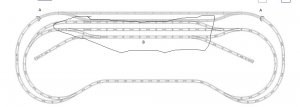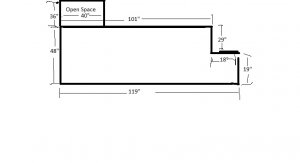I am getting ready to start my layout, and I have an idea of what I want the track plan to look like. I found this one on the web, but want to modify it a bit, some feed back would be greatly appreciated. Where I have labeled A I assume is a tunnel, I want to delete the tunnel and maybe elevate the section of track. I would like to run a double mainline, my son who is 4 and my daughter who is 7 wants to run passenger trains, I think they just want to yell all aboard, but if that is something they enjoy, then I am going to try and accommodate them. I am doing a modern day railway, and would like to add a small yard to service the local industries. So I need to clean up section B and either put my yard there or if anyone else has an idea, I am all ears. I also have a "garage" for some of my loco's and my son says, buy I am not sure if I can make that work or not. I am doing this in DCC, and want to keep the wiring simple, simple is better for me when it come to that. My thought was to run the passenger service on the outer rail, and try to put the station in the back, because where I am putting this in my basement, there is a built in self behind my bench work that I thought about trying to incorporate into the railway somehow. At this point, I am open to help and suggestions. I downloaded SCARM, but have not spent much time sitting down and playing with it. Thanks for the help in advance.




